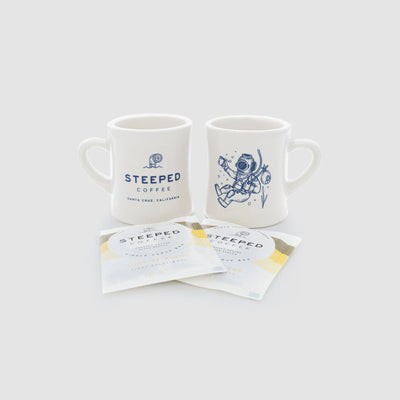FORBES: Above and Beyond Instant Coffee
The descriptor “instant” combined with coffee conjures up images of homespun holiday mornings and hidden camera restaurants scenes – marketing trickery for a product so odious it’s best suited for soldiers in a war zone where its shelf life rivals those of their meal, ready to eat (MRE). It has a long history, invented separately by a Frenchman, a New Zealander, and a Japanese scientist in Chicago, all before the Wright brothers’ flight at Kittyhawk in 1903. That’s a history dating back nearly 140 years, and today it still accounts for nearly half of green coffee production. Finally, in the past decade or so, the quality risen enough for it to be a possible alternative to the coffee shop, in-room pod, or travel kit.
Instant coffee is generally formed by spray drying brewed coffee at high temperatures over 400 degrees to rapidly evaporate water and leave clumps of concentrated dried crystals. This can be applied to large batches, forming very small granules, and thus potentially well suited for large volume production. However, the high heat alters the chemical composition, impairing the flavor, rendering it undrinkable by those familiar with specialty coffee.
None of the instant coffees before the last decade were worth drinking as a replacement for a fresh brewed cup unless time was so short – as in the bus-is-coming-down-the-road short – that a swig, any swig, was better than nothing. Starbucks Via, launched just over a decade ago, was touted as nearly indistinguishable from its freshly brewed coffee (it was not, at least not to this writer). Starbucks, however, should receive some credit for its efforts, as Via’s success may have pioneered a concept that startups and specialty roasters are now bringing into the third wave.
However, the term “instant” should be expanded, thanks to companies like Steeped. Counter Culture’s pursuit of “simplicity, flexibility, and convenience” has guided their development of a single serving coffee in partnership with Steeped (see below for more coverage on both). Technically, it’s not instant coffee, as it requires steeping for 5 minutes. In reality, however, that net difference between traditional instant versus steeped coffee is a net two minutes, after the former cools down to drinking temperature for a few minutes. But it should taste better.
The search here, then, is for a tasty cup out of the home and coffee shop, where some combination of speed, portability, and convenience is maximized. This would be ideal for camping and overseas travel, where space, weight, and the availability of alternatives beg for a simple solution. Of course, two other equally important considerations must be factored – sustainability and cost. Perhaps the most promising development in this product category is that neither have to be compromised.
Below are several “instant” coffee products of note.
The Santa Cruz-based company launched through Kickstarter in 2017, purports that coffee making has become too complicated. Steeped offers five choices of their own specialty coffee blends, including a decaffeinated option, at varying roast levels, sourced, as of this publication, from Colombia and Ethiopia. These options are also available in starter kits or through a flexible subscription service, which can drop the price per cup as low as $1.00/cup. Steeped roasts and processes from Santa Cruz, using compostable and renewable materials for its products.
Counter Culture examined the instant coffee products over the last decade and chose a different route, partnering with the Steeped to produce a single serving, dehydrated satchel. As one of the most outwardly focused coffee companies concerned with sustainability, Counter Culture also considered this factor in their design. The tea-like pouches are 100% biodegradable, and the enclosing airtight sealed package is renewable and compostable. Three proprietary blends are available, including a decaffeinated option.
For the whole article...
Lauren Mowery Contributor
ForbesLife
I cover drinks, travel and food, and the intersection of all three.
